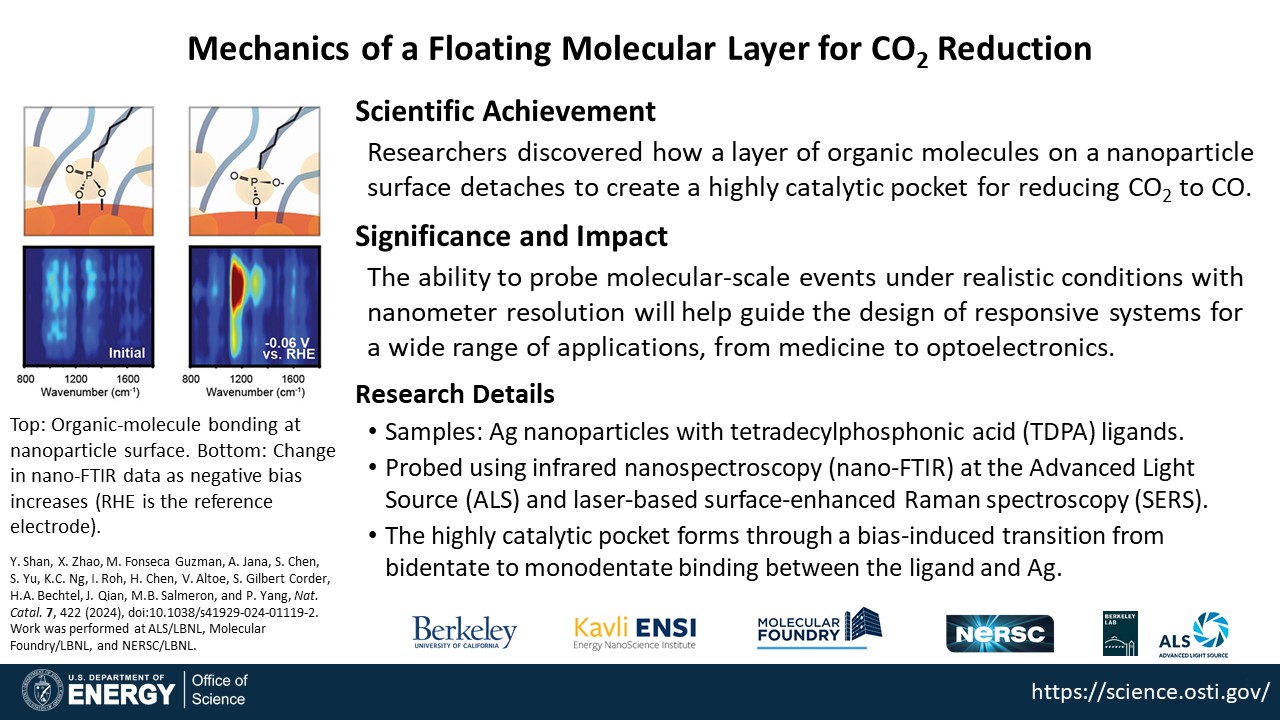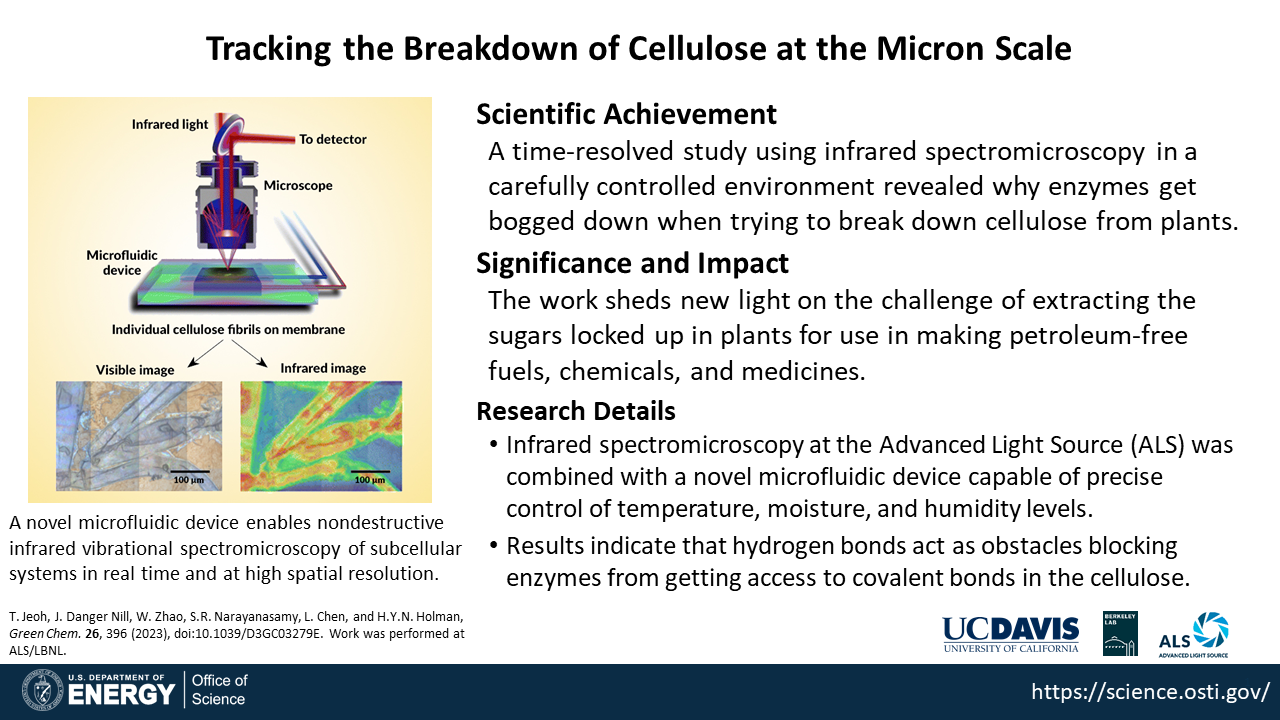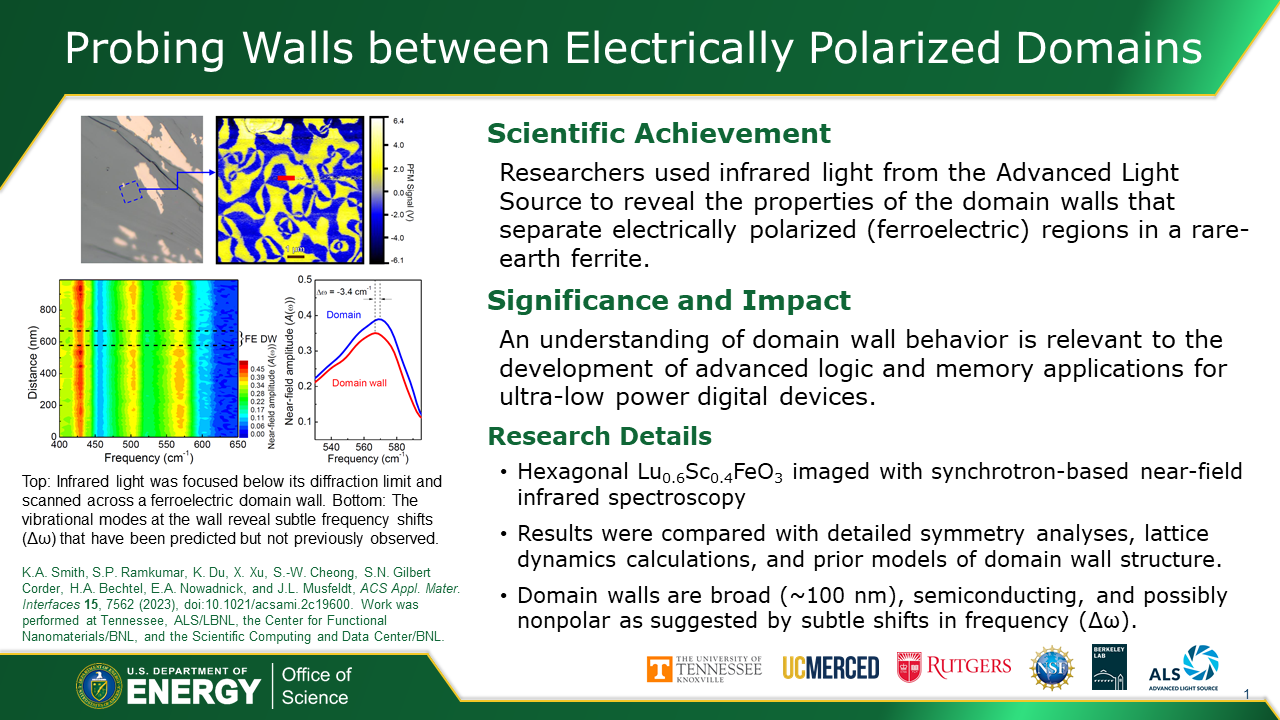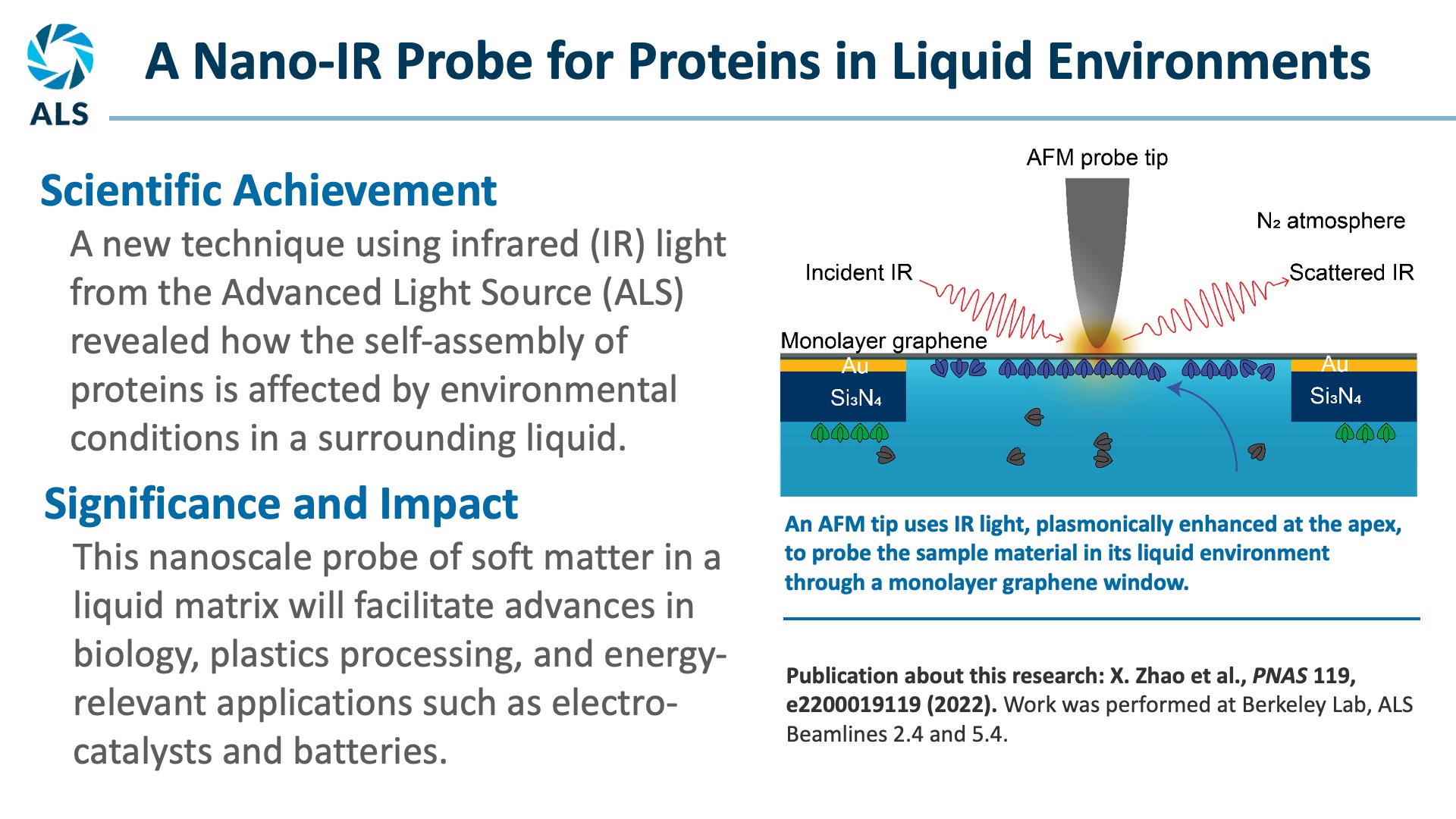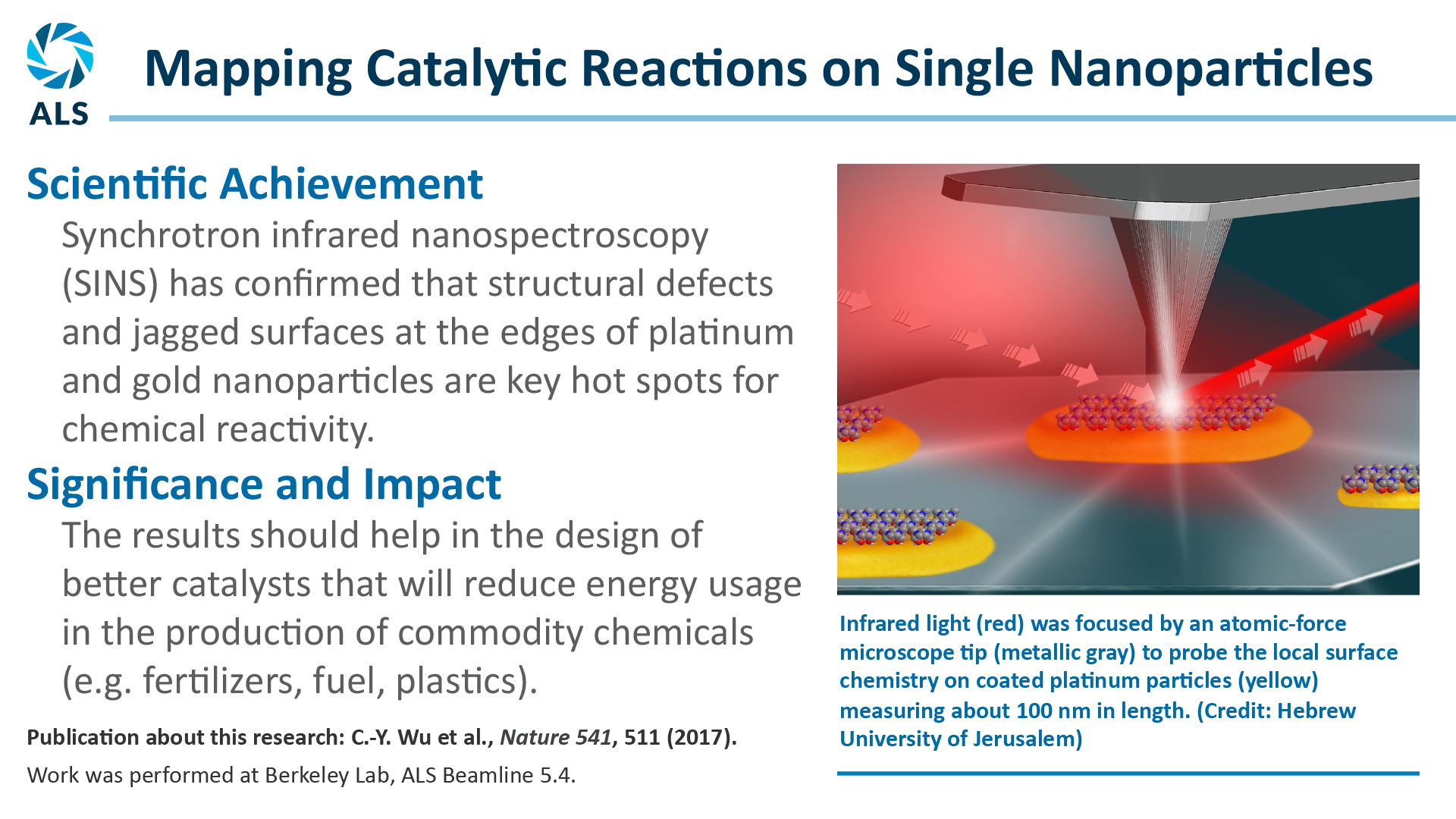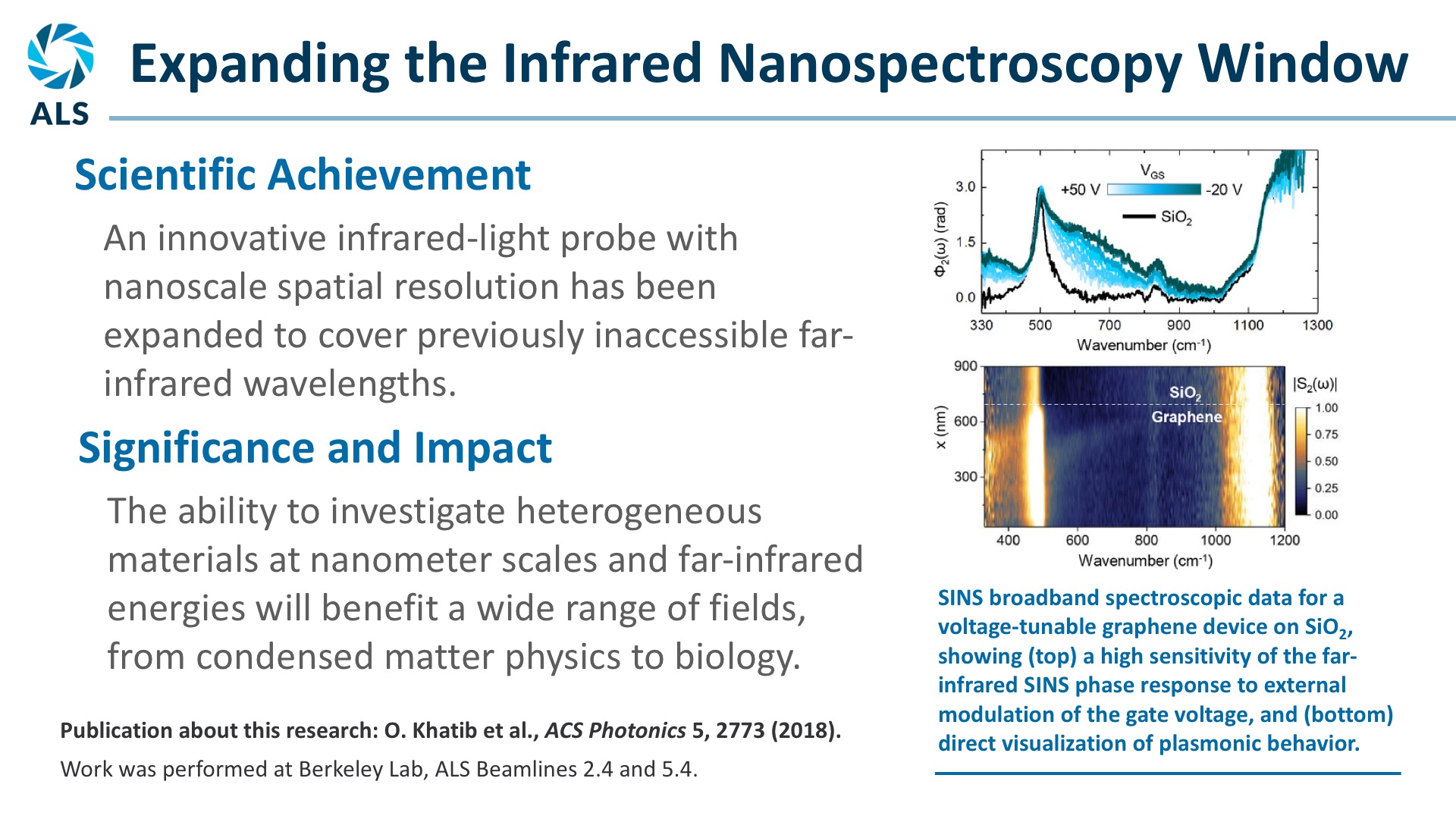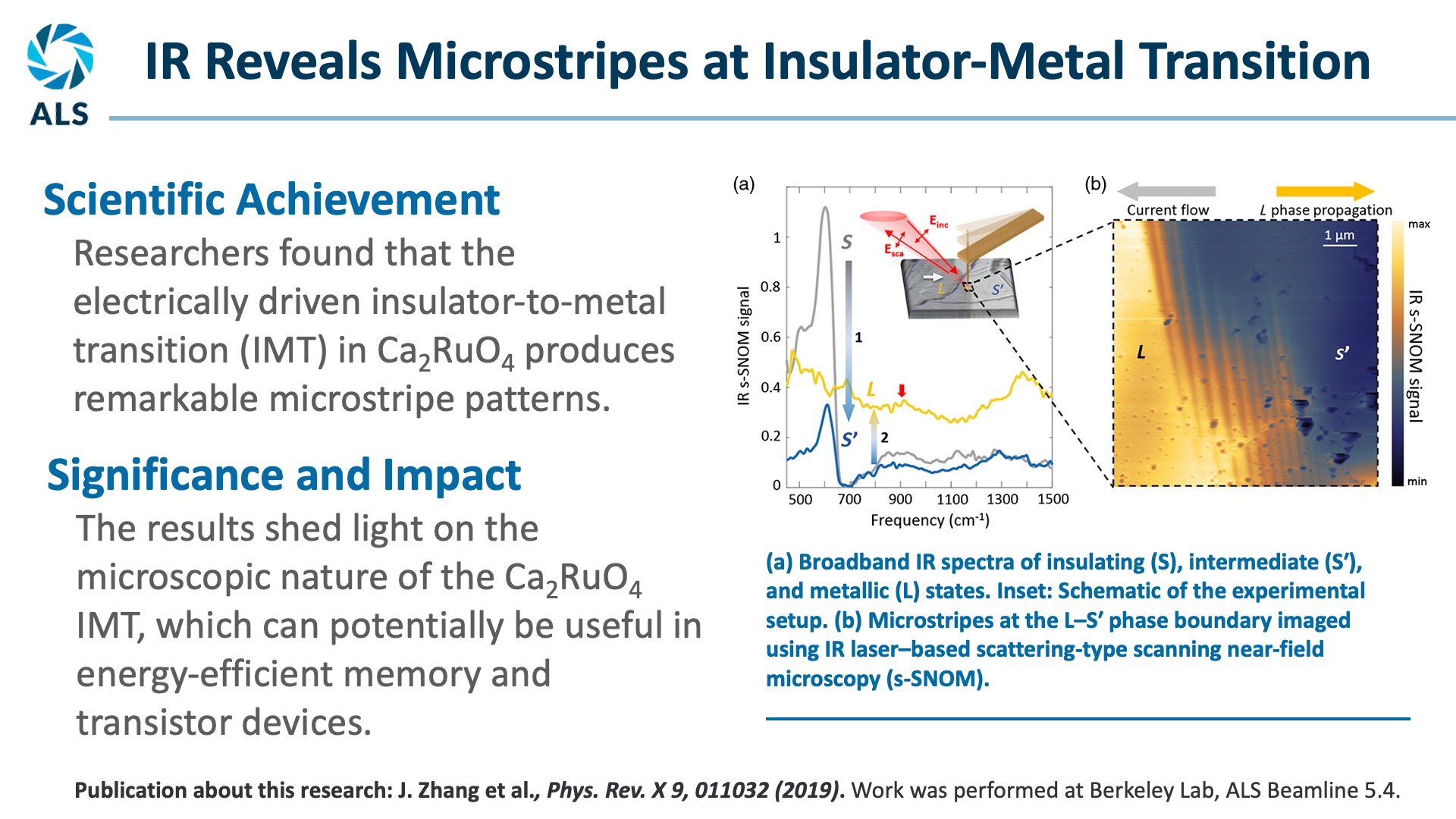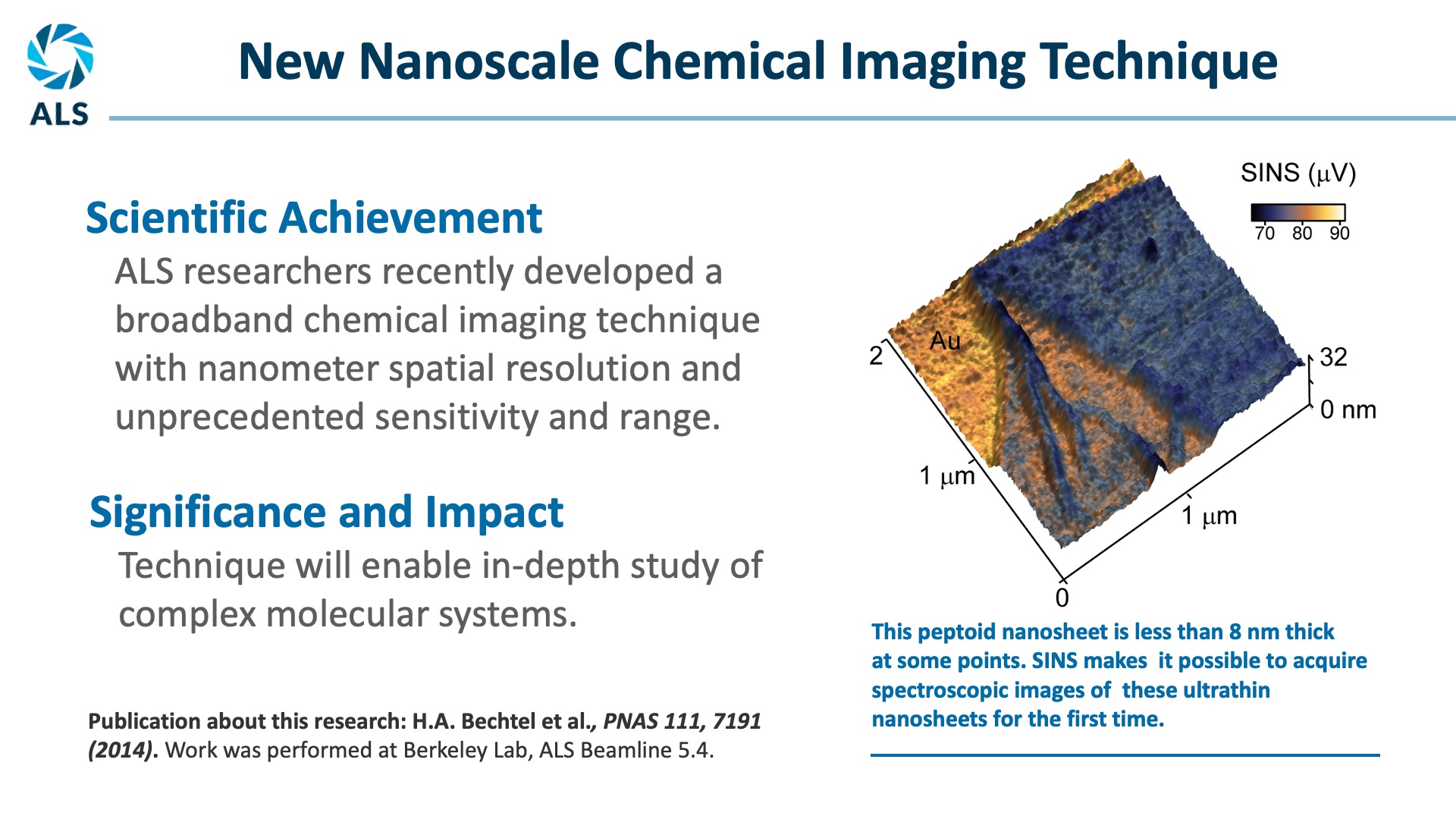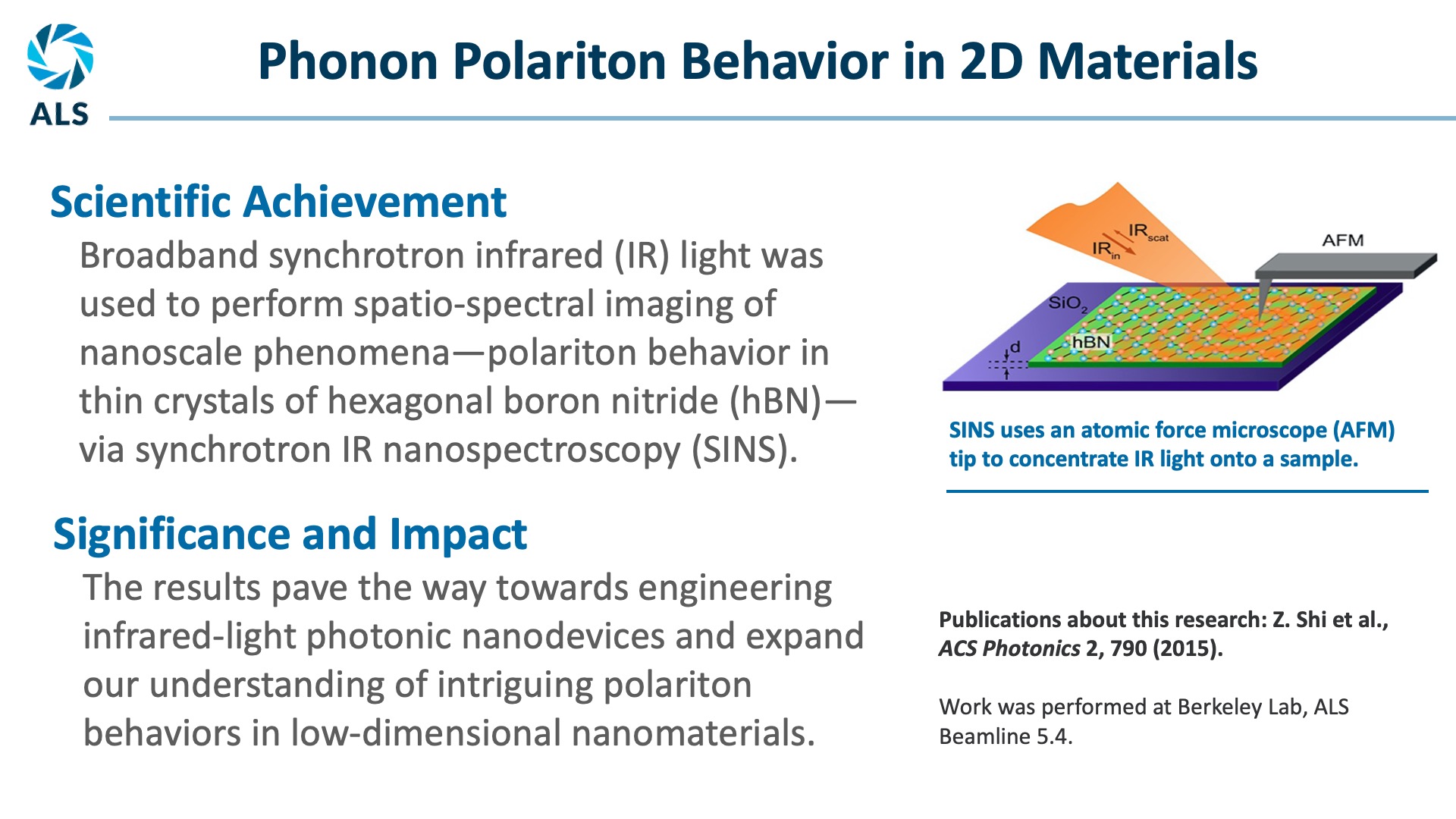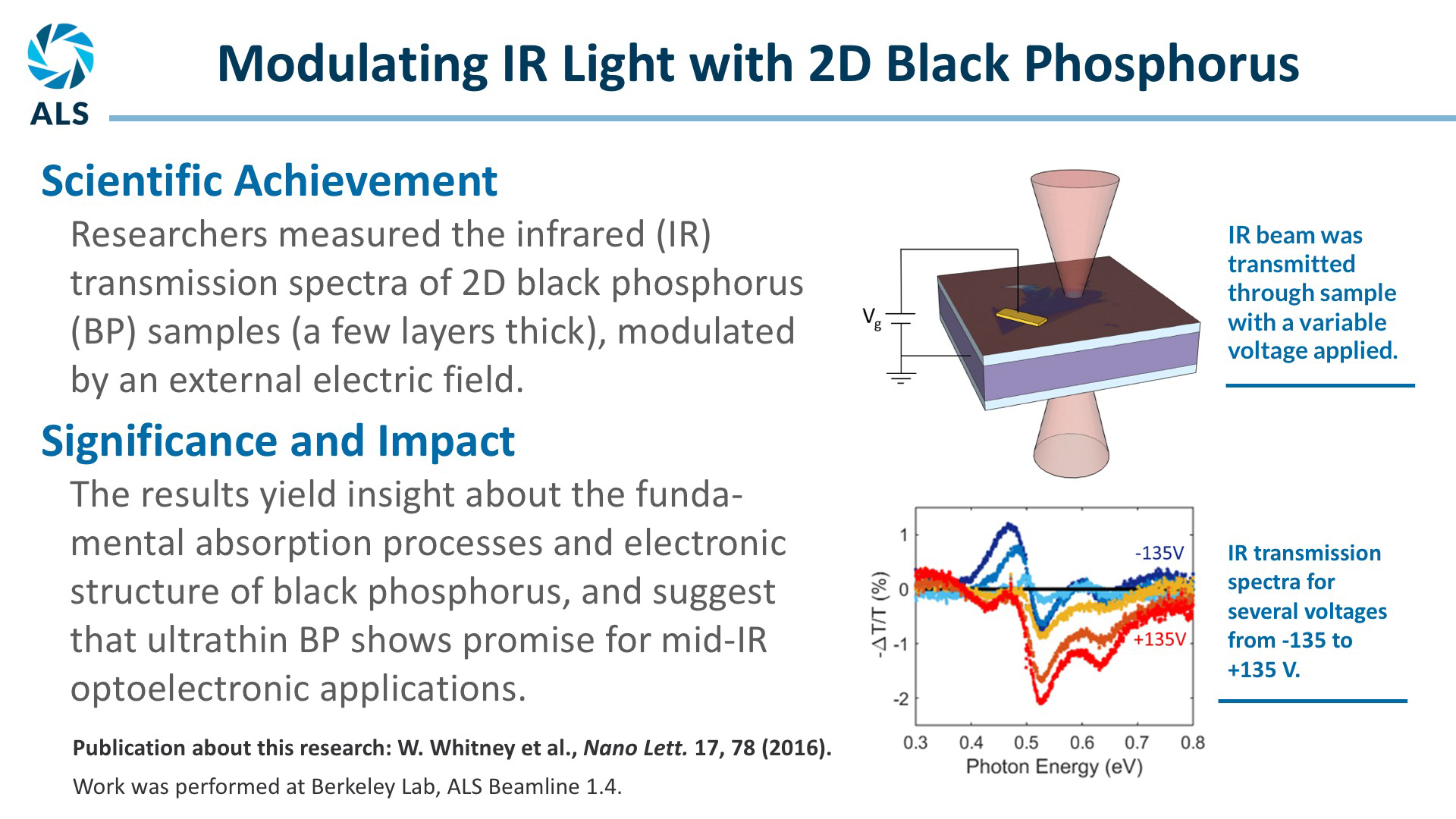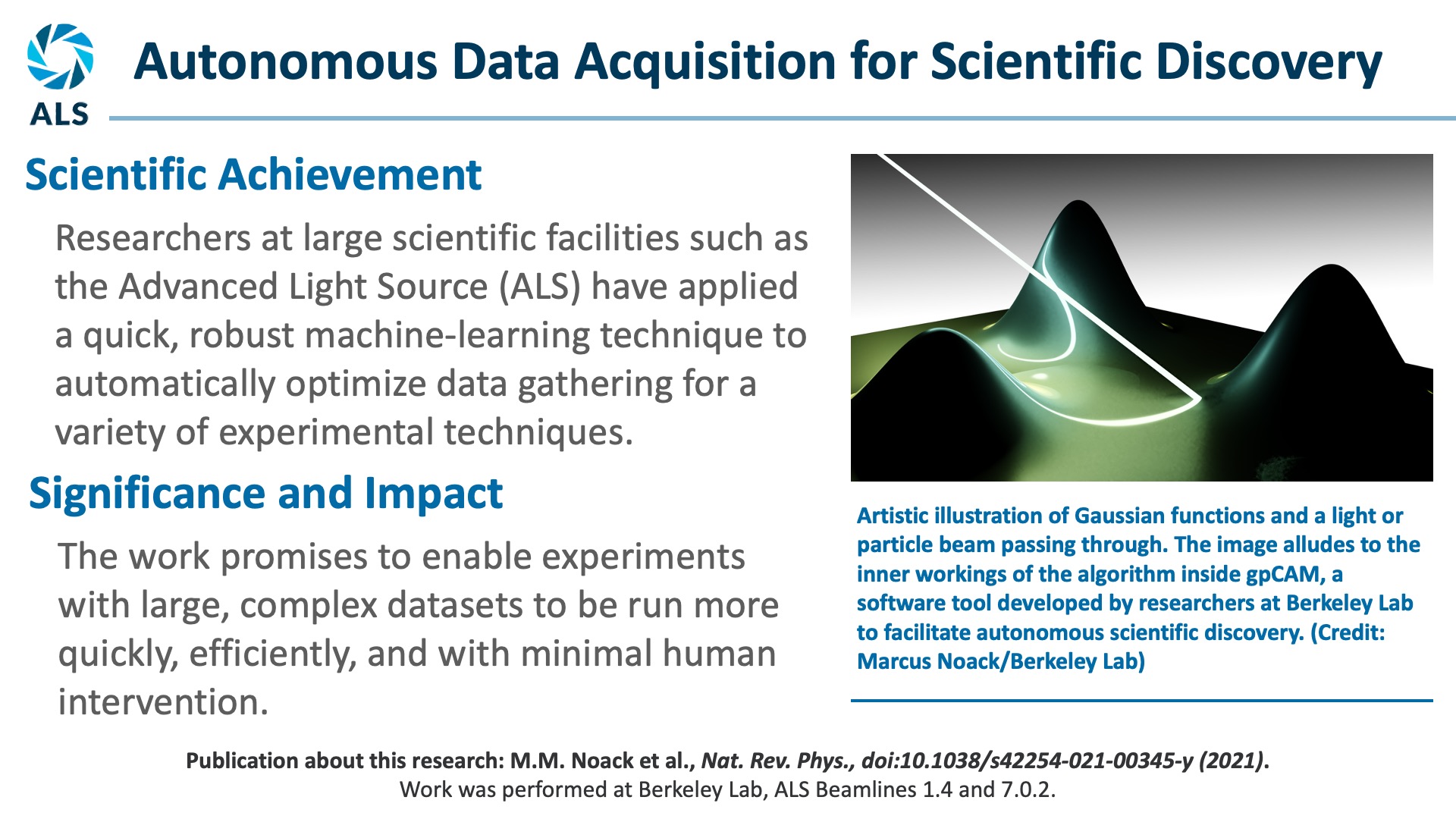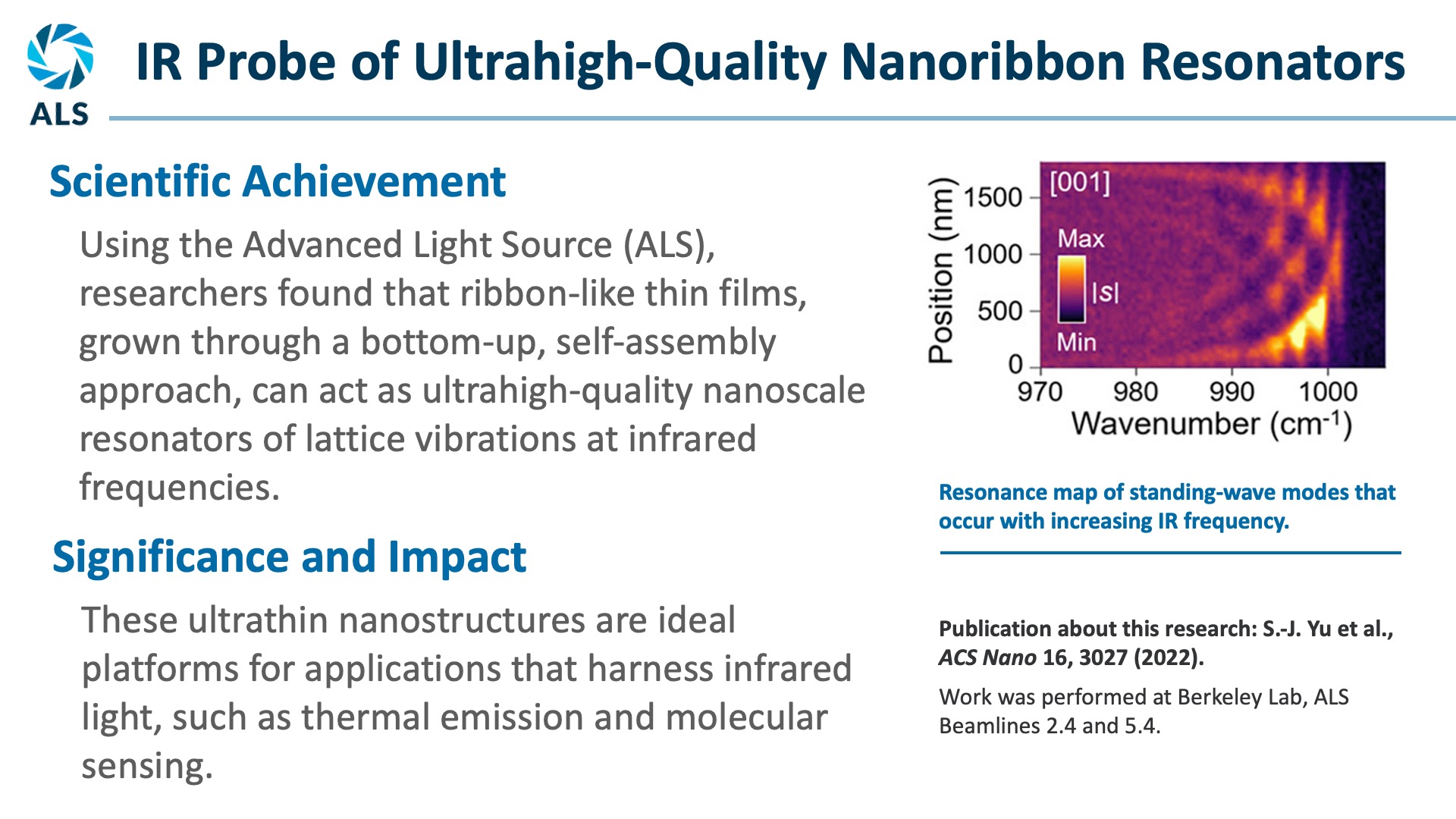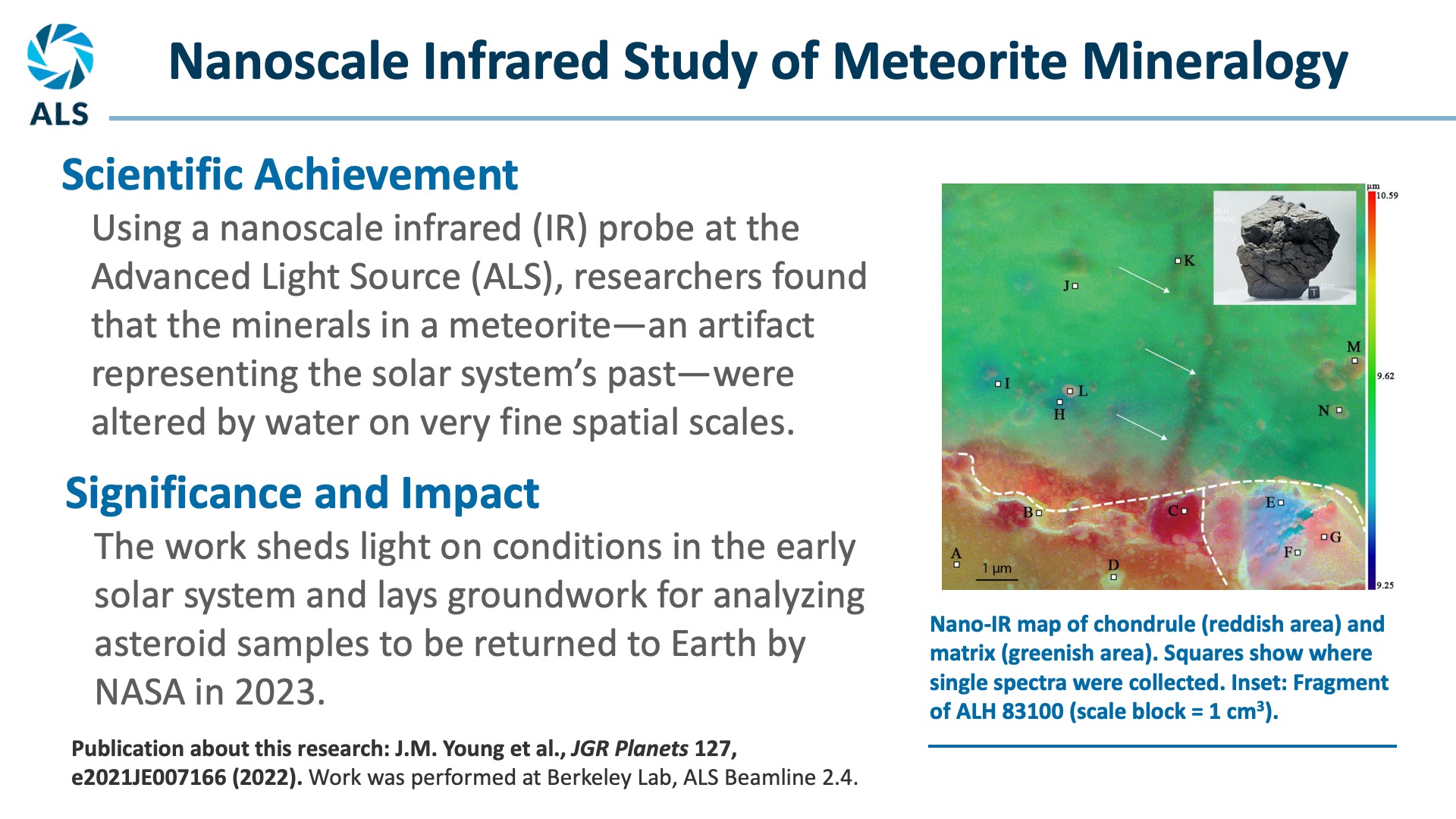Program Overview
The Infrared (IR) Program manages and operates three infrared beamlines at the ALS to analyze a variety of hard- and soft-matter materials at the micro- and nanoscale. Synchrotron IR radiation spans the far-, mid-, and near-IR and is 100–1000 times brighter than a conventional thermal source, enabling broadband spectroscopic imaging with high signal-to-noise ratios at the diffraction limit (synchrotron IR micro-spectroscopy) and well beyond the diffraction limit (synchrotron IR nano-spectroscopy). By probing molecular and lattice vibrations, low-energy electronic excitations, and related collective plasmon and phonon resonances, the high spatial resolution of synchrotron IR spectroscopy enables measurements of heterogeneity in engineered and natural/living samples found in materials science, physics, chemistry, environmental science, biology, and medicine. Our IR micro-spectroscopy endstations have a wavelength-dependent spatial resolution of 2–10 µm in the mid-IR range, and our IR nano-spectroscopy endstations have a wavelength-independent spatial resolution of less than 25 nm.
If you are interested in utilizing these capabilities, please contact the beamline staff and consider submitting a User Proposal!
Selected Highlights
For more highlights from the IR Program, please see the highlights page.
